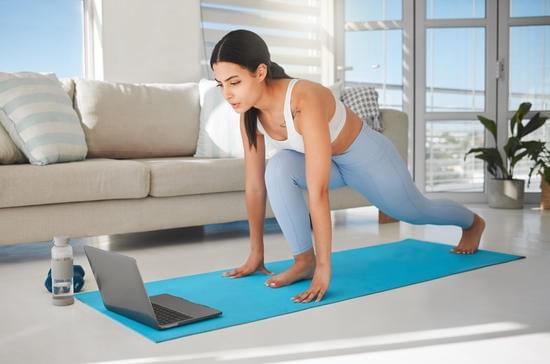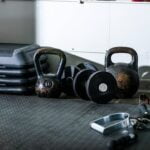Finding the motivation to stay fit when you are unable to workout can be a daunting challenge. Whether it’s due to injury, busy schedules, or unforeseen circumstances, maintaining your fitness levels without traditional exercise is essential for overall well-being. In this article, we will explore how to stay fit when you can’t workout and provide practical tips to help you stay active and healthy.
When faced with limitations that prevent you from engaging in regular workouts, it is crucial to find alternative ways to keep your body moving and maintain your fitness levels. By incorporating different strategies and activities into your routine, you can still work towards your health goals without hitting the gym. From adjusting your mindset to embracing new forms of exercise, there are various approaches that can help you stay on track even when traditional workouts are not an option.
In the following sections, we will discuss setting realistic fitness goals that don’t rely on conventional exercises, the importance of proper nutrition for muscle maintenance and energy levels, as well as exploring different physical activities like bodyweight workouts, yoga, meditation, outdoor adventures, and simple daily habits that promote movement.
By following these recommendations and staying committed to your health journey, you can overcome obstacles and continue prioritizing your well-being even when circumstances prevent you from working out as usual.
Setting Realistic Goals
Reassess Your Definition of “Workout”
When you can’t engage in your usual workout routine, it’s important to redefine what exercise means to you. Instead of focusing on high-intensity gym sessions or long runs, consider incorporating small bursts of physical activity throughout your day.
This could include taking the stairs instead of the elevator, doing squats while brushing your teeth, or even dancing while cooking dinner. By broadening your definition of exercise, you’ll be more likely to stay active and meet your fitness goals.
Focus on Consistency and Progress
Even without access to a gym or equipment, you can still make progress towards your fitness goals by being consistent in your efforts. Set achievable daily or weekly targets for physical activity, such as going for a brisk walk each morning or completing a set number of push-ups before bed. By tracking your progress and gradually increasing the intensity or duration of your activities, you’ll stay motivated and see improvements in your overall fitness levels.
Embrace Variety and Fun
Staying fit when you can’t workout doesn’t have to be boring or monotonous. Look for fun and engaging ways to stay active that align with your interests and preferences.
Whether it’s joining a virtual dance class, trying out new outdoor sports like rock climbing or paddleboarding, or engaging in bodyweight exercises inspired by martial arts, finding activities that bring joy and excitement will enhance your commitment to staying fit. Remember that staying active is not just about physical health but also about enjoying the process and feeling good about yourself.
Eating for Fitness
Eating a nutritious diet is essential for maintaining muscle mass and energy levels, especially when you can’t engage in your regular workout routine. Whether you are temporarily sidelined due to injury or other circumstances, focusing on proper nutrition can still help you stay fit. One key aspect is ensuring you are consuming an adequate amount of protein to support muscle health. Lean proteins like chicken, fish, tofu, and legumes are excellent sources that can be incorporated into your meals.
In addition to protein, it’s important to include a variety of fruits and vegetables in your diet to provide essential vitamins and minerals. These nutrients not only support overall health but also aid in energy production and recovery processes. Opt for a rainbow of colorful produce to ensure you are getting a wide range of nutrients. Whole grains, nuts, and seeds are also good choices for sustaining energy levels throughout the day without relying on intense workouts.
Staying hydrated is another crucial element of maintaining fitness without traditional exercise. Drinking an adequate amount of water each day can help prevent fatigue, improve digestion, and support overall bodily functions. Carry a reusable water bottle with you wherever you go as a reminder to stay hydrated throughout the day. By focusing on nutrition and hydration, you can continue to support your fitness goals even when unable to engage in your usual workout routine.
| Nutrition Tips | Benefit |
|---|---|
| Incorporate lean proteins like chicken and tofu | Supports muscle health |
| Include a variety of fruits and vegetables | Provides essential vitamins and minerals |
| Stay hydrated by drinking enough water daily | Prevents fatigue and supports bodily functions |
Bodyweight Workouts
When you find yourself unable to hit the gym or go for your usual run, it can be frustrating to think about how to stay fit when you can’t workout. However, there are still plenty of ways to stay active and maintain your fitness levels without traditional exercise equipment or routines.
Bodyweight workouts are a great option that require minimal space and no special gear. These exercises utilize your own body weight as resistance, helping to build strength, improve flexibility, and increase endurance.
One effective bodyweight exercise is the classic push-up, which targets multiple muscle groups including the chest, arms, shoulders, and core. Variations like incline push-ups or diamond push-ups can add challenge and variety. Squats are another essential bodyweight exercise that work the lower body muscles such as the quads, hamstrings, and glutes.
Lunges, planks, mountain climbers, burpees, and sit-ups are also excellent options for a full-body workout at home. By incorporating a combination of these exercises into your routine, you can engage different muscle groups and keep your body moving even without access to a gym.
To maximize the benefits of bodyweight workouts when you can’t do traditional exercises at a gym or fitness center, it’s important to focus on proper form and technique. This will help prevent injuries and ensure that you are getting the most out of each movement. Additionally, varying the intensity and duration of your workouts will keep things challenging and prevent plateaus in your fitness progress.
Remember that consistency is key – make it a habit to incorporate these bodyweight exercises into your daily routine so that staying active becomes second nature. No matter where you are or what limitations you may have in terms of workout equipment, there are always ways to prioritize your fitness goals through creative approaches like bodyweight workouts.
Yoga and Meditation
One of the benefits of practicing yoga is its ability to improve flexibility and mobility in your body. Stretching through various poses helps prevent stiffness in muscles and joints without the need for intense physical exercise.
Additionally, yoga can also aid in building muscular strength by holding challenging poses that require engaging different muscle groups. This combination of flexibility and strength training makes yoga a versatile practice that contributes to overall fitness even when a traditional workout routine is not feasible.
Incorporating meditation into your daily routine can have numerous positive effects on both your physical and mental health. Meditation has been shown to reduce anxiety levels, lower blood pressure, and improve sleep quality – all essential components for a healthy lifestyle.
By taking time to quiet your mind through meditation practices such as mindfulness or guided visualization, you can increase self-awareness and emotional stability. The mental clarity gained from regular meditation sessions can also help you stay focused on your fitness goals and maintain motivation even during times when working out is not possible.
Rest and Recovery
When facing the challenge of not being able to workout, it is crucial to understand the significance of rest and recovery in maintaining overall fitness. While physical activity is essential for staying fit, taking adequate rest days and implementing proper recovery methods are just as important to prevent burnout and injuries. Here are some tips on how to prioritize rest and recovery when traditional workouts are not an option:
- Listen to Your Body: Pay attention to how your body feels after periods of physical activity or even prolonged periods of inactivity. If you feel fatigued, sore, or experiencing any discomfort, it may be a sign that you need to take a break.
- Incorporate Active Recovery: Engage in low-intensity activities such as walking, stretching, or gentle yoga sessions on rest days. These activities can help promote blood flow, reduce stiffness, and aid in muscle recovery without putting too much stress on the body.
- Focus on Quality Sleep: Sleeping plays a crucial role in the body’s recovery process. Aim for at least 7-9 hours of quality sleep each night to allow your muscles and tissues to repair and regenerate properly.
By incorporating these strategies into your routine, you can ensure that your body gets the necessary time to recover and adapt to physical stressors effectively. Remember that rest days are not synonymous with laziness but rather an essential component of any fitness regimen that promotes long-term health and performance.
Outdoor Activities
Hiking
Hiking is a fantastic way to stay active and enjoy the great outdoors. Whether you are exploring local trails or taking on more challenging terrain, hiking provides a full-body workout that can help improve cardiovascular health, build endurance, and strengthen muscles. Plus, being surrounded by nature can have numerous mental health benefits, making it a perfect alternative to traditional gym workouts.
Biking
Cycling is another excellent outdoor activity that can keep you fit when you can’t workout in a traditional gym setting. Whether you prefer road cycling or mountain biking, hitting the trails on two wheels can help improve your cardiovascular fitness, leg strength, and overall endurance. Biking also offers a low-impact workout option that is gentle on the joints, making it suitable for individuals with underlying health conditions or injuries.
Swimming
Swimming is a great total body workout that can help improve cardiovascular fitness, muscle strength, and flexibility. If you have access to a pool or live near open water like a lake or ocean, consider incorporating swimming into your fitness routine as an alternative to traditional gym workouts. Not only does swimming provide an effective workout, but it also offers a refreshing way to cool off during hot weather while staying active.
Stay Active
Staying fit when you can’t workout in the traditional sense can be challenging, but incorporating movement into your daily routine is key to maintaining overall health and fitness. Even without structured exercise, there are simple everyday tips that can help you stay active and keep your body moving. By making small changes to your daily habits, you can boost your physical activity levels and support your fitness goals.
One way to stay active without a formal workout is by taking the stairs instead of the elevator whenever possible. This simple change can increase your heart rate and engage your leg muscles, providing a quick burst of activity throughout the day. Additionally, parking farther away from your destination or getting off public transportation a stop early can add extra steps to your daily routine and help you stay active without dedicated exercise time.
Another effective tip for staying active without workouts is to incorporate short bursts of activity into your day. Whether it’s doing jumping jacks during commercial breaks while watching TV or taking a quick walk around the block during lunch break, finding moments to move throughout the day can make a significant impact on your overall fitness level.
These brief activities may seem small, but they add up over time and contribute to keeping you healthy and fit, even when traditional workouts are not an option.
| Tip | Description |
|---|---|
| Take the stairs | Incorporate stair climbing into your daily routine for added physical activity |
| Short bursts of activity | Add quick movements like jumping jacks or short walks throughout the day for increased fitness levels |
Conclusion
In conclusion, staying fit when unable to workout is definitely a challenge, but it is not impossible. By setting realistic goals, focusing on nutrition, incorporating bodyweight exercises, practicing yoga and meditation, allowing for proper rest and recovery, engaging in outdoor activities, and staying active throughout the day, you can maintain your fitness levels even without traditional workouts. It’s all about adapting and finding alternative ways to keep your body moving and healthy.
Remember that consistency is key when it comes to staying fit. Even though you may not be able to follow your usual workout routine, it’s important to stay committed to your fitness journey and prioritize your health.
Whether it’s going for a walk in nature, doing a quick yoga session at home, or simply taking the stairs instead of the elevator, every little effort adds up. Making small changes to your daily habits can have a big impact on your overall well-being.
So don’t get discouraged if you can’t hit the gym or go for a run as often as you’d like. There are numerous ways to stay active and maintain your fitness levels even without traditional workouts. Keep an open mind, be creative with your approach to exercise, and most importantly, listen to your body. With dedication and perseverance, you can continue working towards your fitness goals no matter what obstacles come your way.
Frequently Asked Questions
How Do You Stay Fit if You Can’t Exercise Easily?
Staying fit without easily being able to exercise can be challenging, but it’s important to focus on other aspects of health like nutrition. Eating a balanced diet and staying active through low-impact activities like yoga or walking can help maintain fitness levels.
How Can I Keep My Body Fit Without Exercise?
Keeping your body fit without exercise may involve focusing on your diet and overall lifestyle choices. Eating nutritious foods, staying hydrated, getting enough rest, and reducing stress are all important factors in maintaining general health and well-being.
How Do You Cope When You Can’t Exercise?
Coping when you can’t exercise might involve finding alternative ways to stay active that don’t put strain on your body. It’s essential to listen to your body, prioritize rest when needed, and explore options like physical therapy or rehabilitation exercises if recovering from an injury.

Passionate about providing useful information to anyone with an interest in the field of Personal Training, I strive to pass on to our readers quality information and to answer any questions about Personal Trainers, the work they do and how to become one.





